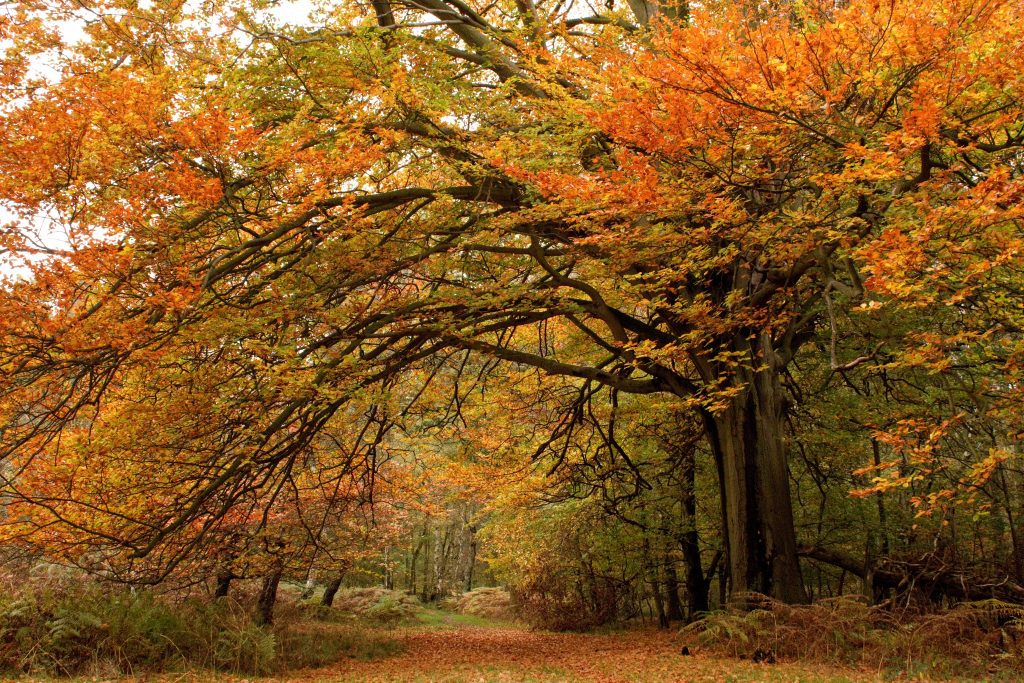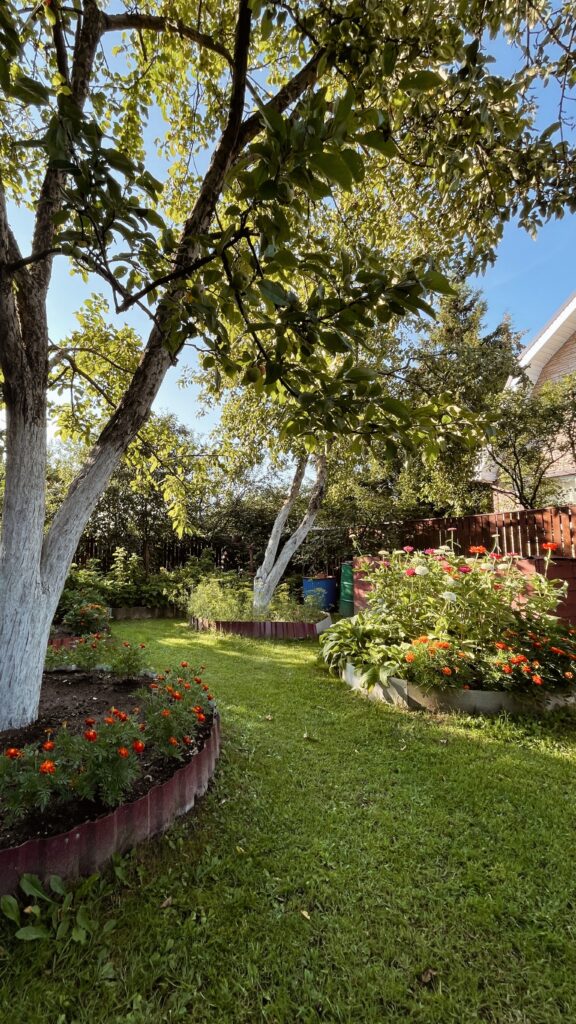BEST PRACTICES FOR MANAGING INVASIVE TREE SPECIES
BEST PRACTICES FOR MANAGING INVASIVE TREE SPECIES
Invasive tree species are non-native plants that have been introduced to a new region and, due to their aggressive growth and lack of natural predators or controls, have the potential to cause ecological harm. These species can outcompete native plants, disrupt local ecosystems, and negatively impact biodiversity. Invasive tree species often have characteristics that allow them to spread rapidly, establish themselves in various environments, and displace native vegetation. Here’s a more detailed explanation:

Characteristics of Invasive Tree Species:
- Rapid Growth: Invasive tree species often have fast growth rates, enabling them to outcompete slower-growing native plants.
- High Reproductive Capacity: They produce large numbers of seeds, fruits, or other reproductive structures, contributing to their ability to quickly colonize new areas.
- Adaptability: Invasive species are adaptable to a wide range of environmental conditions, allowing them to thrive in various habitats and climates.
- Lack of Natural Predators: Being introduced to new areas often means invasive species are free from the natural predators and pathogens that would otherwise regulate their populations in their native habitats.
- Dispersal Mechanisms: Invasive species can be spread by wind, water, animals, or human activity, increasing their reach and colonization potential.
- Changes to Ecosystems: When invasive tree species establish themselves, they can alter soil composition, shade levels, and nutrient availability, disrupting the balance of native ecosystems.
- Reduced Biodiversity: Invasive species can outcompete native plants for resources, leading to reduced diversity in plant and animal species.
Impact on Native Ecosystems
Invasive tree species can have several negative impacts on native ecosystems:

- Competition: They compete with native plants for sunlight, water, nutrients, and space.
- Habitat Disruption: Invasive species can alter habitats, making them less suitable for native flora and fauna.
- Loss of Food Sources: Invasive species can displace native plants that provide food for native animals, leading to a decline in those populations.
- Altered Soil Composition: Some invasive species can change soil pH or nutrient levels, affecting the growth of native plants.
- Increased Fire Risk: Some invasive species are highly flammable, increasing the risk of wildfires in certain regions.
Examples of Invasive Tree Species
- Tree of Heaven (Ailanthus altissima): Native to China, this tree spreads rapidly and can dominate disturbed areas, crowding out native species.
- Russian Olive (Elaeagnus angustifolia): Introduced as an ornamental, this tree can form dense stands along waterways, impacting native riparian habitats.
- Callery Pear (Pyrus calleryana): Often used in landscaping, this tree produces numerous small fruits that can spread widely, contributing to its invasiveness.
- Norway Maple (Acer platanoides): Native to Europe, this tree competes with native maples and other species, affecting forest understory composition.
Efforts to manage invasive tree species involve early detection, rapid response, removal or control strategies, restoration of native habitats, and public education to prevent their spread. The goal is to protect and preserve native ecosystems while minimizing the ecological impact of invasive species.
Importance of Managing Invasive Species For Ecosystem Health
Managing invasive species is of paramount importance for the health and sustainability of ecosystems. Invasive species can wreak havoc on native flora and fauna, disrupt natural processes, and threaten biodiversity. Their unchecked growth can lead to long-lasting ecological imbalances that have far-reaching consequences. Here’s why managing invasive species is crucial for ecosystem health:
- Preservation of Biodiversity: Invasive species often outcompete native plants and animals for resources, leading to a decline in native species. Biodiversity is essential for ecosystem resilience and stability, as different species play unique roles in maintaining ecosystem functions.
- Protection of Native Species: Invasive species can introduce diseases, parasites, and predators that native species are not adapted to withstand. Managing invasives helps protect native species from these new threats.
- Ecosystem Services: Healthy ecosystems provide a wide range of services, such as clean water, air purification, pollination, and soil stabilization. Invasive species can disrupt these services, affecting human well-being and the health of the environment.
- Habitat Preservation: Invasive species can transform habitats, making them unsuitable for native species. This can lead to habitat loss, which impacts wildlife that rely on specific ecosystems for survival.
- Prevention of Further Spread: Invasive species have the potential to spread rapidly, expanding their range and causing problems in new areas. Early intervention can prevent their establishment in new places.
- Restoration of Native Landscapes: By managing invasive species, it’s possible to restore native plant communities and habitats. This enhances the overall health and functionality of the ecosystem.
- Resilience to Climate Change: Invasive species can exacerbate the impacts of climate change by altering habitat composition and reducing the ability of ecosystems to adapt. Managing invasive can help ecosystems better cope with changing conditions.
- Reduction of Ecological Disturbances: Invasive species can alter natural disturbance regimes like fire and flooding, leading to unintended consequences. Managing these species helps maintain natural disturbance patterns.
- Economic Impact: Invasive species can cause economic losses in agriculture, forestry, and other industries. Managing these species can mitigate these losses.
- Public Health: Some invasive species can pose health risks to humans by carrying diseases or causing allergies. Managing these species helps protect public health.
- Long-Term Sustainability: Invasive species can compromise the long-term sustainability of natural areas and ecosystems. Managing invasive is essential for maintaining healthy landscapes for future generations.
- Cultural and Recreational Values: Invasive species can negatively impact cultural and recreational activities that depend on healthy ecosystems, such as hiking, birdwatching, and traditional practices.
Invasive species management requires collaboration between government agencies, conservation organizations, researchers, landowners, and the public. Early detection, rapid response, proper removal techniques, restoration efforts, and education are key components of successful invasive species management. By addressing invasive species issues, we can ensure that ecosystems remain diverse, resilient, and able to provide the essential services that support life on Earth.
Identification and Monitoring
Identification and monitoring are critical components of managing invasive species effectively. Early detection of invasive species and ongoing monitoring of their populations are essential for implementing timely control measures and preventing their spread. Here’s a detailed explanation of identification and monitoring strategies:

Identification
- Field Guides and Resources: Utilize field guides, online resources, and mobile apps specific to your region to aid in the identification of invasive tree species. These resources often provide descriptions, images, and distribution maps.
- Expert Advice: Seek guidance from local botanists, foresters, ecologists, and extension services who have experience in identifying invasive species. They can provide accurate and reliable information.
- Characteristic Features: Familiarize yourself with the unique features of invasive species, including leaves, flowers, fruits, bark, and growth habits. Look for distinguishing traits that set them apart from native species.
- Comparison with Native Species: Learn to differentiate invasive species from similar-looking native species. Pay attention to subtle differences that can help you identify invasives accurately.
- Participation in Workshops: Attend workshops, seminars, or training sessions focused on invasive species identification. These events often provide hands-on experience and expert guidance.
Monitoring
- Regular Site Visits: Regularly visit the area where invasive species are suspected or known to be present. Repeat visits allow you to observe changes in plant populations and track their growth.
- Establish Monitoring Points: Create fixed monitoring points in target areas. Use GPS coordinates or distinctive landmarks to ensure consistency in monitoring locations.
- Use of Transects: Set up transects (linear sampling paths) across the landscape to systematically record invasive species presence and abundance.
- Photographic Documentation: Take photographs of invasive species during different stages of growth. This helps in comparing changes over time and aids in accurate identification.
- Mapping and GPS: Use mapping tools or GPS devices to record the location of invasive species sightings. This data can inform management decisions and track the spread.
- Data Collection Forms: Develop data collection forms that include information about species, abundance, growth stage, and site conditions. This systematic approach ensures consistent data recording.
- Seasonal Monitoring: Conduct monitoring throughout the year to capture changes in growth, reproduction, and other life stages of invasive species.
- Collaboration: Engage community members, citizen scientists, and volunteers in monitoring efforts. This expands coverage and increases the chances of early detection.
- Reporting Systems: Establish a reporting system where people can report invasive species sightings. This information helps authorities respond quickly to new infestations.
- Data Management: Organize and manage monitoring data in a centralized database. This information can be used for trend analysis, decision-making, and planning.
By effectively identifying and monitoring invasive tree species, you can contribute to early detection, rapid response, and successful management efforts. Regular observations and accurate data collection form the foundation for informed decisions and targeted control strategies to prevent the further spread of invasive species and protect native ecosystems.
Prevention
Preventing the introduction and spread of invasive tree species is a crucial aspect of effective invasive species management. Prevention efforts focus on minimizing the pathways through which invasive species are introduced to new areas and establishing regulations and practices to limit their impact. Here’s an in-depth look at prevention strategies:
- Understanding Pathways of Introduction: Identify common pathways through which invasive tree species are introduced, such as trade, transportation, landscaping, and horticultural practices. Gain insights into how invasive species are brought into new regions, whether intentionally or unintentionally.
- Regulatory Measures: Develop and enforce regulations that restrict the import and sale of invasive tree species. Collaborate with government agencies to establish quarantine regulations that prevent the movement of potentially invasive species.
- Plant Certification Programs: Promote the use of certified nursery plants that have been inspected and determined to be free of invasive species. Encourage nurseries to avoid stocking or selling invasive tree species.
- Public Education and Awareness: Raise awareness among the public, gardeners, landscapers, and homeowners about the risks associated with invasive species. Educate individuals about how to identify and report invasive species sightings.
- Outreach and Collaboration: Partner with community groups, conservation organizations, and local businesses to spread information about invasive species prevention. Collaborate with schools, nature centers, and community events to educate people about the importance of prevention.
- Responsible Landscaping Practices: Promote the use of native plant species in landscaping to reduce the demand for invasive ornamental trees. Encourage homeowners to avoid planting known invasive species on their properties.
- Early Detection Networks: Establish networks of trained volunteers, citizen scientists, and professionals who actively monitor for new invasive species introductions. Develop a system for quickly reporting and responding to new invasive species sightings.
- Green Infrastructure Planning: Incorporate invasive species prevention into urban and land use planning to minimize the introduction of invasives in new development projects.
- Ballast Water Management: Address invasive species introduced through ballast water by enforcing regulations for ship ballast water exchange.
- Import Restrictions: Advocate for stricter regulations on the import of plant material and wood products that may harbor invasive species.
- Collaboration with Industry: Work with industries involved in plant trade and transportation to implement best practices for preventing the spread of invasive species.
- Research and Risk Assessment: Invest in research to assess the potential invasiveness of non-native tree species before introducing them to new areas.
Prevention efforts are often the most cost-effective and environmentally friendly way to manage invasive tree species. By reducing the number of introductions and new infestations, prevention helps preserve native ecosystems, protect biodiversity, and avoid the need for more extensive and costly control measures in the future.
About Murray, Utah
Murray is a city situated on the Wasatch Front in the core of Salt Lake Valley in the U.S. state of Utah. Named for territorial governor Eli Murray, it is the state's fourteenth largest city. According to the 2020 census, Murray had a population of 50,637. Murray shares borders with Taylorsville, Holladay, South Salt Lake and West Jordan, Utah. Once teeming with heavy industry, Murray's industrial sector now has little trace and has been replaced by major mercantile sectors. Known for its central location in Salt Lake County, Murray has been called the Hub of Salt Lake County. Unlike most of its neighboring communities, Murray operates its own police, fire, power, water, library, and parks and recreation departments and has its own school district. While maintaining many of its own services, Murray has one of the lowest city tax rates in the state.
Neighborhoods in Murray, Utah
Murray Oakes, Grant Park, Southwood Park, Murray Park, Murray Park Restrooms, Willow Pond Park, Neighborhood Veterinary Care
Things To Do in Murray, Utah
Bus Stops in Murray, Utah to Truco Services, Inc.
Bus Stop in Murray Central Station (Bay C) Murray, Utah to Truco Services, Inc.
Bus Stop in State St @ 4801 S Murray, Utah to Truco Services, Inc.
Bus Stop in Murray North Station Murray, Utah to Truco Services, Inc.
Bus Stop in State St @ 4949 S Murray, Utah to Truco Services, Inc.
Bus Stop in Murray Central Frontrunner/Trax Station Murray, Utah to Truco Services, Inc.
Bus Stop in Murray Blvd / Vine St (SB) Murray, Utah to Truco Services, Inc.
Bus Stop in State St @ 3925 S Murray, Utah to Truco Services, Inc.
Bus Stop in State St @ 4824 S Murray, Utah to Truco Services, Inc.
Bus Stop in State St @ 5223 S Murray, Utah to Truco Services, Inc.
Bus Stop in Murray Blvd / Allendale Dr (NB) Murray, Utah to Truco Services, Inc.
Bus Stop in Murray Blvd @ 5039 S Murray, Utah to Truco Services, Inc.
Bus Stop in State St @ 4721 S Murray, Utah to Truco Services, Inc.
Driving Directions in Murray, Utah to Truco Services, Inc.
Driving Directions from Woodruff Tree Trimming and Removal to 4640 Commerce Dr, Murray, UT 84107, USA
Driving Directions from Reliable Tree Care to 4640 Commerce Dr, Murray, UT 84107, USA
Driving Directions from Tree Pro-Tech to 4640 Commerce Dr, Murray, UT 84107, USA
Driving Directions from Prestige Tree And Landscape to 4640 Commerce Dr, Murray, UT 84107, USA
Driving Directions from Excellence Tree & Landscape to 4640 Commerce Dr, Murray, UT 84107, USA
Driving Directions from Amen Trees to 4640 Commerce Dr, Murray, UT 84107, USA
Driving Directions from Tim's Tree Care to 4640 Commerce Dr, Murray, UT 84107, USA
Driving Directions from Jordan Tree Service - Murray to 4640 Commerce Dr, Murray, UT 84107, USA
Driving Directions from Arbor Works to 4640 Commerce Dr, Murray, UT 84107, USA
Driving Directions from Diamond Tree Experts to 4640 Commerce Dr, Murray, UT 84107, USA
Driving Directions from Green Tree Arborist to 4640 Commerce Dr, Murray, UT 84107, USA
Driving Directions from TruCo Services to 4640 Commerce Dr, Murray, UT 84107, USA
Reviews for Truco Services, Inc. Murray, Utah
Emily Abercrombie
We had a great experience with TruCo! They were well priced, responsive and prompt. Michael was a pleasure to work with and gave us advice on which plants to put in where we took out our ugly old shrubs. I would highly recommend this company!!!
Michelle Turpin
TruCo Services gets 5 stars from us for customer service. We experienced a few issues with their services this last year and Rob Eccles in senior management, stepped in and immediately handled our issues. He was very committed to making sure they understood our expectations and would execute to make us happy.
Siobhan Billingsley
I work for a property management company and have the pleasure of working with Rob at a community in Sandy. He has been incredible to work with and always responds in a timely manner. He knows all the homeowners by name and address and is aware of all the "problem" areas when it comes to sprinklers. I never have to worry about following up with him because he always reaches out to provide me with an update. If you're looking to work with someone who takes pride in their job, is professional, and can solve the worst landscaping problems thrown your way, Rob is your guy. Thank you, Rob for all you do!
Jaime S.
We have used Truco at 2 of the complexes we manage, they have been great to work with. Good quality service, outstanding customer service with good communication. That's hard to find these days. I highly recommend them. Travis has been awesome to work with.
Jerusha Smart
We use TruCo for a majority of our properties and our home. While other landscaping companies we use come and go for various reasons like cost, communication issues, work performance, etc., TruCo is always consistent in price and work. Also, Rob is the best.






